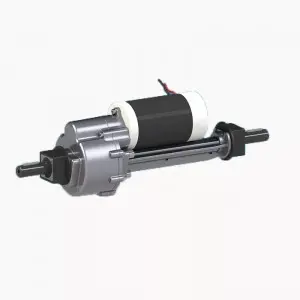In the ever-evolving automotive world, various components work in harmony to provide a smooth and efficient driving experience. One of the key components is the transaxle. But what exactly is a transaxle? Do you really need it? In this blog, we’ll take an in-depth look at the function and necessity of a transaxle in modern vehicles to help you understand its importance.
Learn about transaxles:
The transaxle is an important part of the vehicle’s powertrain system. It combines the transmission and differential into an integrated unit, providing a variety of advantages in terms of mechanical performance and overall vehicle performance. Simply put, it connects the engine to the wheels, effectively transferring power from the engine to the drive wheels.
Advantages of transaxle:
1. Improved Weight Distribution: One of the significant advantages of a transaxle is its ability to balance weight distribution. By placing the gearbox and differential in a single unit, the vehicle’s weight distribution is more balanced, which is crucial for optimal handling and stability.
2. Improved fuel efficiency: A well-designed transaxle can significantly improve a car’s fuel efficiency. By integrating the transmission and differential, it minimizes the power losses that typically occur when transferring power from the engine to the wheels. Reduced mechanical losses translate into improved fuel economy, making the transaxle an important component for the environmentally conscious driver.
3. Simplified packaging: Transaxles also have advantages in terms of packaging. Since it combines two important drivetrain components, there is no need for extra space under the vehicle, allowing for better use of space. This is especially beneficial in vehicles with limited space, such as compact cars, where every inch of space counts.
4. Cost-Effectiveness: While some may argue that transaxles are more expensive to manufacture and repair, the overall cost-effectiveness of this component cannot be ignored. Combining the transmission and differential into a single unit simplifies the manufacturing process, reducing assembly time and complexity. Additionally, it simplifies maintenance and repairs, potentially saving vehicle owners time and money.
When do you need a transaxle?
The need for a transaxle depends largely on the type of vehicle you have and its drivetrain configuration. Front-wheel drive vehicles are almost always equipped with a transaxle because it efficiently transfers the transverse engine’s power to the front wheels. Rear-wheel drive vehicles, on the other hand, typically have separate transmissions and differentials, so no transaxle is required.
In addition, all-wheel drive (AWD) and four-wheel drive (4WD) vehicles often rely on a transaxle to efficiently distribute power among multiple wheels. Transaxles in all-wheel drive and four-wheel drive systems ensure optimal traction and handling by balancing power between the front and rear wheels, or left and right wheels.
While the necessity of a transaxle may vary depending on the drivetrain and vehicle type, there’s no denying that it plays an important role in improving vehicle power, fuel efficiency, and overall performance. From improved weight distribution to fuel economy, transaxles have proven their worth in many aspects of modern automotive engineering. Whether you drive a compact sedan, a front-wheel-drive sedan, or an all-wheel-drive SUV, understanding the importance of the transaxle helps you appreciate its contribution to a great driving experience.
Post time: Oct-13-2023


